Harnessing Thermal Imaging for Effective Pest Control
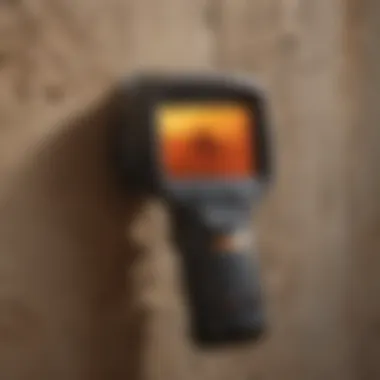
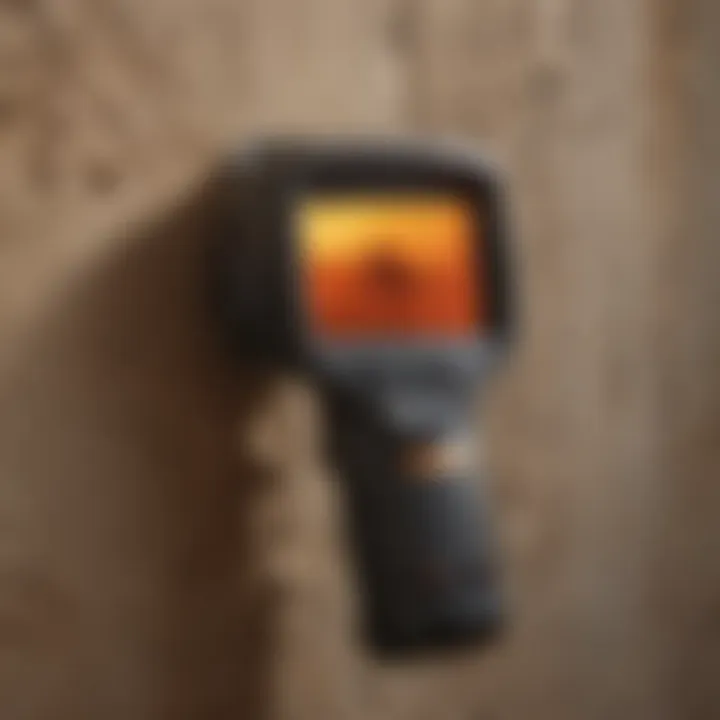
Intro
Thermal imaging technology plays an increasingly crucial role in pest control. This method leverages infrared radiation to reveal temperature differences, making it an effective tool in detecting pests, especially hidden threats like termites. This article dissects how this technology can improve pest management strategies, delivering both insights and practical applications.
Successful pest control hinges on accurate pest identification. Often, pests like termites remain out of sight until significant damage has already occurred. However, by employing thermal imaging, homeowners and professionals can uncover infestations early, addressing the problem more efficiently. Understanding pests and their habits is vital for implementing effective control measures.
Pest Identification
Detailed Descriptions of Common Pests
Pests can vary widely, but some common ones include:
- Termites: Wood-destroying insects that create colonies underground or within wooden structures. They cause significant damage and can go unnoticed for long periods.
- Rodents: Mice and rats can invade homes, posing health risks and damaging property.
- Ants: Various species can infiltrate homes, often seeking food or a nesting site.
- Bed Bugs: These pests feed on human blood and can cause discomfort and anxiety in homeowners.
Understanding these pests is critical for timely intervention. Thermal imaging can help spot their nests, even in places where visibility is limited.
Signs and Symptoms of Infestations
Recognizing signs of pests is paramount for early detection. Common indicators include:
- Termites: Look for mud tubes on walls and hollow-sounding wood.
- Rodents: Gnaw marks, droppings, and greasy streaks along walls are common signs.
- Ants: Observing trails of ants can indicate a nearby nest.
- Bed Bugs: Bites on the skin and rust-colored spots on bedding are potential signs.
Utilizing thermal imaging can offer additional detection capability, leading to more informed pest management decisions.
Prevention Strategies
Home Maintenance Tips for Pest Prevention
Keeping pests at bay involves proactive measures. Homeowners can take several steps, including:
- Sealing cracks and crevices in walls, doors, and foundations.
- Properly storing food in airtight containers to minimize attractants.
- Regularly cleaning areas where pests may thrive, such as attics and crawl spaces.
- Maintaining landscaping to avoid overgrowth that can harbor pests.
Implementing these strategies reduces the likelihood of infestations and enhances overall home safety.
Natural Deterrents and Barriers
While chemical treatments exist, some prefer natural alternatives. Common natural deterrents include:
- Diatomaceous earth: A fine powder that disrupts the exoskeletons of insects like ants and bed bugs.
- Essential oils: Oils like peppermint or tea tree can repel various pests.
- Physical barriers: Installing screens and barriers can also help keep pests outside, reducing their chances of entering your home.
These measures align well with a preventative approach and can be easily integrated into regular maintenance routines.
Treatment Options
Overview of Chemical vs. Natural Treatments
Pest control treatments can be broadly categorized into chemical and natural options. Each has its specific advantages and applications:
- Chemical Treatments: Often effective for immediate results, they can target a wide array of pests but may contain harmful ingredients.
- Natural Treatments: These methods tend to be safer for human health and pets. They may require more time to see results but align with eco-friendly practices.
Step-by-Step Guides for DIY Treatments
For homeowners interested in DIY solutions, here’s a basic guide for simple treatments:
- Identify the Pest: Use thermal imaging or visual inspection to identify the pest type and location.
- Choose a Treatment: Decide between a chemical or natural method based on your preference.
- Apply the Treatment: Follow instructions carefully; ensure the area is safe for family and pets.
- Monitor the Area: Continue to observe the treated space for signs of pest activity.
In summary, thermal imaging enhances pest control by providing accurate detection capabilities. By understanding pests, maintaining homes, and considering treatment options, homeowners can effectively manage pest issues, contributing to a safer living environment.
"Investing in thermal imaging technology can revolutionize modern pest management, offering a glimpse into hidden threats that traditional methods often overlook."
The following links may provide further information and insights: Wikipedia, Britannica, Reddit, Facebook.
This article will delve deeper into the nuances of these topics, providing readers with the knowledge they need for effective pest control.
Prolusion to Thermal Imaging in Pest Control
The topic of thermal imaging in pest control is becoming increasingly relevant as homeowners and pest management professionals seek more effective methods for infestation detection. Thermal imaging technology provides a sophisticated approach to identifying pest problems that is non-invasive, efficient, and precise. In this article, we will explore various aspects of how thermal imaging can improve pest control practices.
Defining Thermal Imaging
Thermal imaging refers to the use of infrared cameras to detect heat emissions from objects, which allows the visualization of temperature variations. This technology operates on the principle that living creatures, including pests, generate heat. Thus, thermal imaging serves as a valuable tool in identifying the presence of pests based on their heat signatures. For instance, if an area of a structure is suspiciously warmer than its surroundings, it could indicate a pest infestation, such as termites or rodents, that needs further investigation.
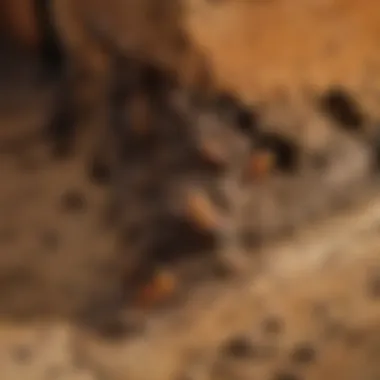
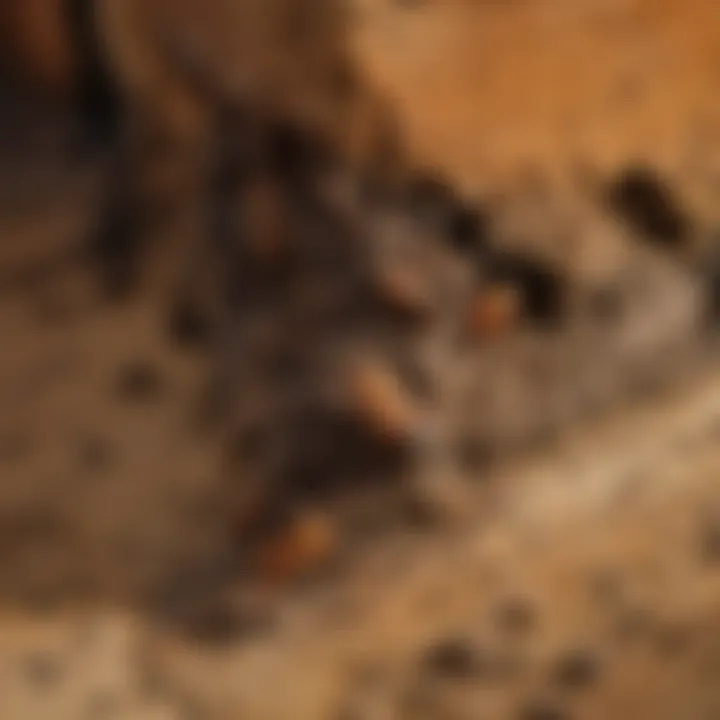
Thermal imaging cameras provide a visual representation of this heat data, offering pest control professionals a real-time view of potential problems without the need for invasive inspections. This visual aid enhances the ability to locate pests more easily and effectively, saving time and resources compared to traditional pest detection methods.
Brief History of Thermal Imaging Technology
The origins of thermal imaging technology can be traced back to the 1950s when the military first utilized it for reconnaissance, providing advantages in visibility during challenging conditions. Over the years, advancements in materials science and sensor technology have enabled the miniaturization and cost reduction of thermal imaging systems. In the 1990s, the technology started to be adopted by various industries, including construction, medicine, and pest control.
In pest management, thermal imaging gained popularity in the early 2000s as professionals recognized its potential for identifying hidden infestations. As the technology became more affordable and accessible, pest control companies began integrating it into their service offerings. Today, thermal imaging is an established method used to improve the accuracy and efficiency of pest detection, benefiting both service providers and homeowners.
"Thermal imaging represents a significant leap in pest control technology, enhancing detection capabilities while minimizing disruption."
The enhanced capabilities of thermal imaging have transformed pest control practices, offering an array of benefits that continue to evolve with the technology. As we proceed into further sections, we will explore the specific advantages and applications of this innovative technology in pest management.
Understanding Pest Infestations
Understanding pest infestations is crucial in the context of thermal imaging and pest control. Properly identifying and comprehending these infestations lays the foundation for effective management strategies. Homeowners need to recognize not just the immediate pests, but also the broader implications of infestations on property and well-being. When pests invade, they do not only disrupt the home environment but also pose significant threats to structure integrity, personal health, and overall safety.
An accurate understanding of common pests enables targeted thermal imaging applications, which are essential for efficient pest control. This section explores specific elements of pest identification and the broader impact pests have on residential properties.
Identifying Common Pests
Identifying common pests is the first step in pest management. Common pests vary by region, but some frequently encountered intruders include:
- Termites: Known for their destructive nature, termites often go unnoticed until significant damage occurs.
- Rodents: Mice and rats are notorious for invading homes. They are quick breeders and can cause extensive damage.
- Cockroaches: These pests spread diseases and are resilient against many control methods.
- Bed bugs: Known for their elusive nature, bed bugs thrive in sleeping areas and can lead to stress and health issues.
Understanding the habits and signals these pests exhibit can direct homeowners in using thermal imaging tools effectively. For example, termite tunnels might show temperature differences that thermal imaging can detect, allowing for early intervention.
The Impact of Pests on Properties
Pests can have numerous adverse effects on residential properties. Here are some key considerations:
- Structural Damage: Pests like termites can lead to severe structural issues by weakening beams and other integral parts of a building.
- Health Risks: Rodents and cockroaches are known carriers of diseases, posing substantial health risks to inhabitants.
- Financial Loss: Repairs stemming from pest damage can be costly. Additionally, continual infestations may reduce property value.
"Proactive pest management not only protects your home but also safeguards your investment."
Addressing infestations early through thermal imaging can help mitigate these impacts. It emphasizes the importance of understanding pest infestations to implement suitable control measures.
In summary, recognizing the significance of pest identification and their implications is essential. This understanding guides the effective use of thermal imaging technology, creating a more efficient and comprehensive pest control strategy.
Thermal Imaging Technology Explained
Thermal imaging technology plays a significant role in pest control today. As infestations vary by type and severity, understanding how thermal imaging works can lead to better pest management strategies. This technology captures the heat emitted from objects, making it possible to detect issues like pest presence within walls and other concealed spaces. The ability to visualize unseen problems forms the basis for its growing popularity in pest management.
How Thermal Imaging Works
Thermal imaging captures infrared radiation, translating it into images we can understand. Objects emit heat, which varies based on their temperature. Cameras specifically designed for thermal imaging detect these variations in heat and convert them into an image, known as a thermogram. In pest control, this allows professionals to identify warmer areas that may indicate a pest infestation.
The core of thermal imaging technology relies on sensors that gauge the infrared energy being emitted. When these sensors detect differences in temperature, they create a color-coded image that can reveal hidden problems. For instance, termites and other pests often generate heat because they produce metabolic energy. When a pest infestation occurs within walls or insulation, this thermal energy can often be detected before physical signs like droppings or damage appear.
In practical terms, this means that pest control technicians can conduct inspections more efficiently. Thermal imaging allows them to pinpoint problem areas quickly, significantly reducing the time spent on inspections compared to traditional methods like visual checks alone.
Types of Thermal Imaging Cameras
Not all thermal imaging cameras are the same; they vary in technology, price, and functionality. Some common types include:
- Handheld Thermal Cameras: These devices offer portability and ease of use. Ideal for quick assessments, they are favored by technicians performing on-site inspections.
- Fixed Thermal Camera Systems: These cameras are often installed in permanent locations for ongoing monitoring. They provide continuous surveillance, making them beneficial for large properties or businesses.
- Drone-Based Thermal Cameras: Drones equipped with thermal imaging sensors can cover extensive areas quickly, providing insights that ground-based inspections may miss. This is particularly useful for large agricultural settings or inaccessible locations.
In selecting a camera, several factors must be considered, including resolution, range, and unique features that enhance pest detection capabilities. Quality often correlates with the camera's price; thus, investing in a well-regarded model can yield better results in pest management efforts.
Thermal imaging technology offers a means of proactive pest control through early detection, aiding in mitigating potential damage. Understanding how these systems work and the types available equips homeowners and property managers with better tools for effective pest management.
Advantages of Using Thermal Imaging in Pest Control
Thermal imaging technology brings significant improvements to pest control practices. It provides solutions that align with modern demands and challenges in pest management. Utilizing thermal imaging allows pest control professionals and homeowners to tackle infestations more effectively. The unique attributes of this technology offer clear benefits over traditional inspection methods. Here, we delve into the primary advantages which include non-invasive inspection, increased detection accuracy, and time efficiency.
Non-Invasive Inspection
One of the principal advantages of thermal imaging is its non-invasive nature. Unlike traditional methods that may involve drilling, cutting into walls, or using harmful chemicals, thermal imaging can detect pests without disrupting the environment. This technology captures infrared radiation emitted from objects, allowing for identification of temperature differences caused by pest presence. Thus, the structural integrity of a home is preserved.
For instance, when termites infest wooden structures, they can produce slight heat variations that thermal cameras can pick up. Traditional methods might require physical alterations to a property, creating potential damage or requiring costly repairs. Thermal imaging presents a safer approach for both the property and for individuals residing within.
Increased Detection Accuracy
Detection accuracy is vital for effective pest control. Thermal imaging technology dramatically improves accuracy compared to conventional pest detection methods. By visualizing temperature dissimilarities, various pest infestations, especially those hidden behind walls, can be accurately identified.
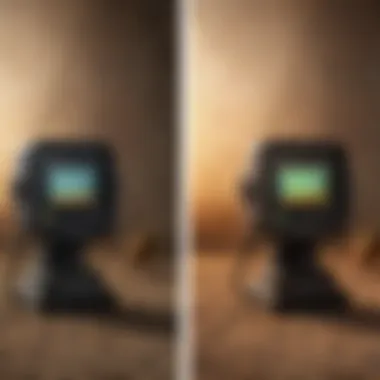
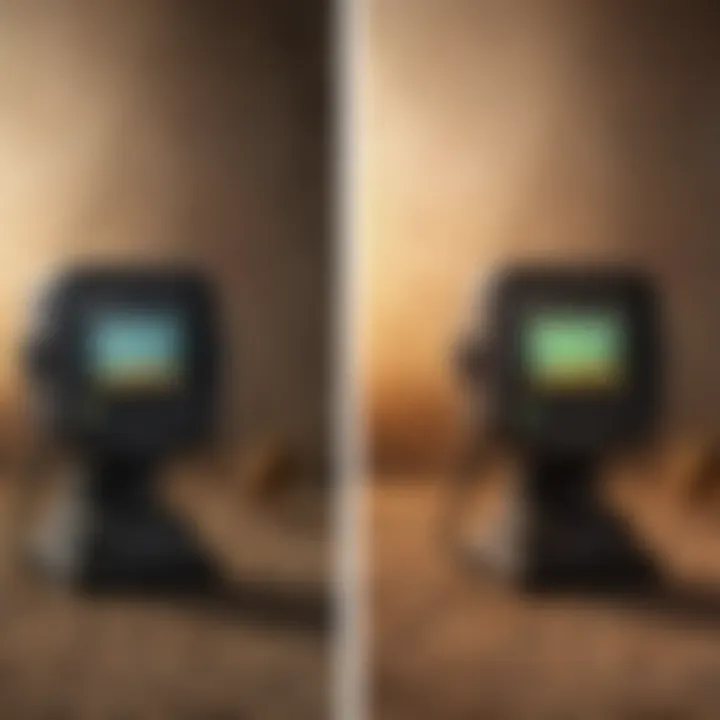
For example, pests like rodents might cause localized temperature changes due to their presence and activity. Traditional visual inspections might fail to detect them as they often hide in crevices or behind walls. Thermal imaging minimizes the risks of missed infestations and allows for targeted treatment strategies. This leads to heightened success rates in pest management efforts, ultimately providing peace of mind to homeowners.
Time Efficiency Compared to Traditional Methods
Time efficiency is another key benefit of utilizing thermal imaging in pest control. Traditional methods often require extensive investigation and longer periods to realize effective conclusions. This leads to prolonged responses to infestations which can escalate issues over time.
With thermal imaging, pest control professionals can quickly scan an area. The technology enables faster identification of pest presence, often within minutes. This swift detection process means remedial actions can be promptly initiated, reducing the duration of pest control interventions.
In consequence, not only is time minimized during inspection, but long-term costs can also be reduced due to less extensive treatment needed.
"Thermal imaging doesn't just detect pests. It revolutionizes how we understand and manage pest issues effectively."
In summary, the pros of using thermal imaging in pest control include maintaining property conditions through non-invasive practices, increasing detection accuracy, and optimizing response times. As pests continue to pose challenges for homeowners, embracing this technology becomes a practical choice. It allows for more proactive and precise management of infestations.
Practical Applications of Thermal Imaging in Pest Management
Thermal imaging technology has found significant practical applications in pest management. This advancement in technology offers various benefits, making it a valuable asset for both pest control professionals and homeowners alike. The ability to conduct non-invasive inspections and catch pest infestations early is crucial. By utilizing thermal imaging, pest control can become more efficient and effective, ultimately leading to better management practices.
Case Studies of Successful Applications
Numerous case studies demonstrate the effectiveness of thermal imaging in pest control. One notable instance involves a residential property that suffered recurrent termite infestations. Traditional methods relied heavily on visual inspections and chemical treatments, often resulting in incomplete pest eradication. The introduction of thermal imaging led to a comprehensive assessment of the property.
Upon conducting a thermal scan, technicians identified heat patterns that indicated active termite colonies within walls, an area that had been overlooked previously. By locating these hidden pests, the technicians could apply targeted treatment, leading to a successful eradication of the termites. This case highlights how thermal imaging not only improves detection but also optimizes treatment strategies, allowing for precise interventions.
Another example comes from a commercial setting, where a warehouse experienced a rodent infestation. Here, thermal imaging cameras quickly revealed areas where rodents were nesting, which would have taken much longer through conventional methods. As a result, the pest management team was able to deploy traps effectively and mitigate future risks.
Common Settings for Thermal Imaging Use
Thermal imaging is versatile and can be applied in various settings for pest management. Some common areas where this technology proves beneficial include:
- Residential Homes: Early detection of pests like termites and rodents ensures timely remediation without extensive damage.
- Commercial Buildings: Large facilities, like warehouses and offices, can benefit from thermal imaging to monitor pest activity and maintain a pest-free environment.
- Agricultural Fields: Farmers can utilize thermal imaging to detect invasive species or identify issues with crops that pests might cause.
- Industrial Sites: Facilities with sensitive equipment can monitor pests that could disrupt operations, ensuring compliance with health standards.
In summary, the practical applications of thermal imaging extend across various environments, showcasing its role in effective pest management. By adopting this cutting-edge technology, stakeholders can improve outcomes and maintain healthier living and working spaces.
Limitations of Thermal Imaging in Pest Control
While thermal imaging presents significant advantages for pest control, it is crucial to recognize its limitations. Understanding these challenges helps both professionals and homeowners manage expectations and use the technology more effectively. The limitations can affect detection accuracy and the overall effectiveness of pest control efforts.
Environmental Factors Affecting Performance
Thermal imaging relies on detecting temperature variations. However, environmental conditions can impact its performance significantly. For instance, factors such as humidity, wind, and ambient temperature can alter the thermal signatures that cameras capture. In wet conditions, surfaces may retain heat longer, leading to inaccurate readings.
- Humidity: High humidity levels can diffuse thermal emissions, making it harder to distinguish between pest activity and environmental noise.
- Temperature Fluctuations: Sudden changes in the surroundings can lessen the clarity of thermal images. If it’s a warm day, the temperature readings may not indicate pest presence effectively since the ambient temperatures can mask the insects' warmth.
- Obstructions: Objects between the thermal camera and the target insects can block heat signatures. Insulation materials like foam or dense surfaces significantly hinder thermal detection.
“Understanding environmental influences can enhance the effective use of thermal imaging in pest management.”
Variability in Detection Skills
The effectiveness of thermal imaging also heavily varies depending on the user's skills. Not all operators possess the same level of training or experience, which can lead to differences in results.
- Training Impact: Well-trained users can interpret thermal images accurately, identifying potential infestations. In contrast, an untrained individual may misinterpret the data, leading to ineffective pest control actions.
- Experience Level: Experienced operators have encountered various scenarios, learning to account for different variables that affect readings. A novice may not recognize subtle clues in thermal data, which can lead to misdiagnosis.
- Equipment Familiarity: Not all operators are equally skilled in using the specific thermal imaging devices. Knowledge about the range and capabilities of the camera used is essential for effective pest detection.
Integrating Thermal Imaging with Other Pest Control Methods
Integrating thermal imaging with other pest control methods is a crucial element in modern pest management strategies. This integration allows for a holistic approach to pest control, combining the strengths of various techniques to enhance overall effectiveness. By using thermal imaging as a complementary tool, pest control professionals and homeowners can achieve better results in their efforts to manage infestations.
Combining Techniques for Enhanced Results
The application of multiple pest control techniques can lead to a more robust strategy. Thermal imaging provides valuable insights into hidden infestations, revealing areas of heat that indicate pest activity. When combined with traditional methods like chemical treatments or physical removal, this can create a multi-faceted approach to pest management. For example,
- Thermal imaging can pinpoint the exact location of pests.
- Pesticides can then be applied directly to these high-activity zones.
- Traps can be strategically placed based on thermal findings, increasing their chances of success.
This layered approach not only increases detection accuracy but also minimizes pest resistance to chemical treatments. When pests are targeted more effectively, the need for repeated pesticide applications can be reduced, leading to safer and more environmentally friendly pest control practices.
Example Multi-Method Strategies
Several strategies showcase the integration of thermal imaging with other pest control methods:
- Inspection followed by Treatment: Initially, a pest control expert utilizes thermal imaging to identify hotspots. After identifying these areas, they can decide on the best treatment strategy, whether it be traps, bait stations, or chemical sprays.
- Monitoring and Maintenance: Once an initial treatment has taken place, thermal imaging can be used for ongoing monitoring. This strategy involves regularly scanning the property to catch any new infestations early, ensuring continued pest management.
- Customized Plans for Different Pests: Each type of pest may require a different approach. For example, termites might be best managed through baiting systems after an initial thermal scan, while rodents may require a combination of traps guided by heat signatures.
Utilizing these integrative strategies can greatly increase the efficiency and effectiveness of pest control efforts. Understanding the distinct strengths of thermal imaging, when coupled with traditional methods, ensures that homeowners can maintain a pest-free environment with optimized resources.
Cost Considerations in Using Thermal Imaging
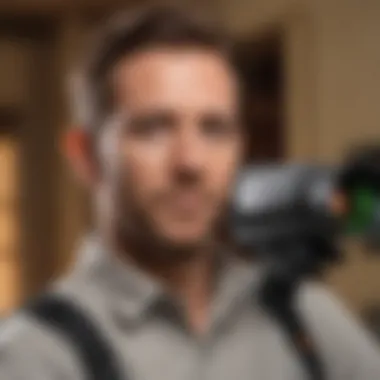
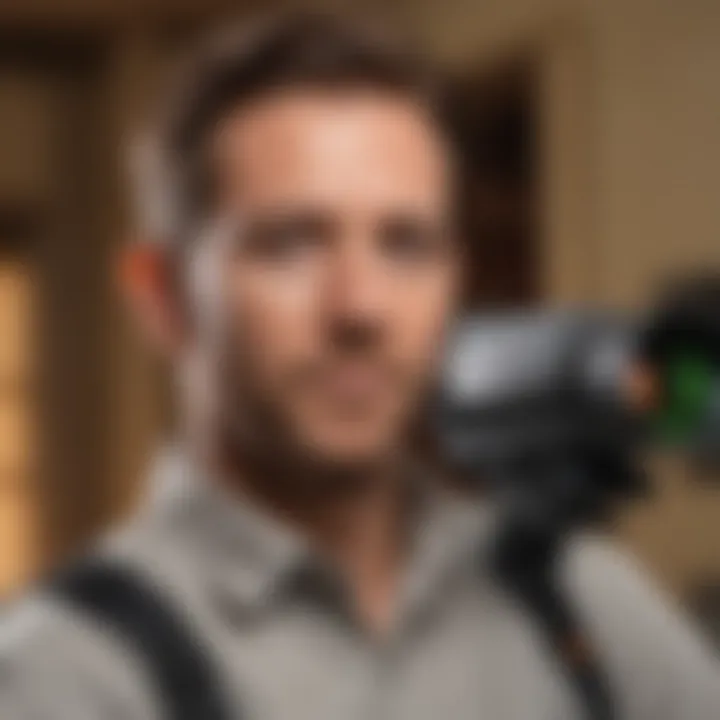
When discussing thermal imaging in pest control, understanding the cost implications is essential. This section reveals both the initial financial outlay and the potential long-term economic benefits associated with this technology. Knowing these factors can aid homeowners and pest control professionals in making informed decisions.
Initial Investment vs. Long-Term Savings
The initial investment in thermal imaging equipment can seem high compared to traditional pest control methods. Thermal cameras can range in price, sometimes costing thousands of dollars. However, catching infestations early can save significant money in repairs and treatments later. For example, treating a termite infestation when it starts is more cost-effective than addressing widespread damage after it has occurred.
Key Points to Consider:
- Maintenance Costs: Regular maintenance of equipment is necessary. This includes software updates and calibration, which contributes to the total cost.
- Training Expense: Operators need proper training to use thermal cameras effectively. The cost of training should not be overlooked since proficient use of the technology enhances its value.
- Longevity of Equipment: Quality thermal cameras have a long lifespan, providing reliable service for many years. This can lead to lower incidentals over time compared to frequent treatments with other methods.
Overall, while the upfront cost is substantial, the potential for long-term savings through more accurate pest detection and prevention is a consideration worth evaluation.
Cost Comparison with Traditional Methods
Comparing thermal imaging with traditional pest control methods provides valuable insights into efficiency and pricing.
- Traditional Methods: These primarily include chemical treatments and physical inspections. Costs can add up over time due to the need for repeated applications and inspections. For instance, if a pest issue is not detected quickly, the costs escalate due to damage repairs and extensive treatment processes.
- Thermal Imaging: This technology allows for pinpoint detection, which can drastically cut down on labor and chemical usage. Pest control professionals can assess areas without invasive measures, increasing the efficiency of inspections and treatments. This method can prove less expensive in the long run by limiting damage and reducing chemical applications.
Training and Certification for Thermal Imaging
Training and certification in thermal imaging are vital for effective pest control. Mastering this technology requires specific knowledge and skills. It enhances the competence of pest control professionals and ensures homeowners can trust the services they receive.
Thermal imaging is a specialized field. Those using these tools must understand both the technology and pest behavior. Familiarity with how to interpret the thermal images is crucial. Therefore, training programs should cover both theoretical and practical aspects of thermal imaging.
With proper training, individuals can accurately detect pest infestations at early stages. This leads to more efficient pest management strategies. Identifying issues like moisture problems can also be addressed, which might otherwise lead to pest attractions.
Essential Skills Required
To effectively utilize thermal imaging in pest control, several skills are essential:
- Technical Proficiency: Understanding how thermal cameras operate, including calibration and settings.
- Image Analysis: Learning to interpret thermograms accurately to identify hotspots that suggest pest presence.
- Problem-Solving Skills: Quickly adapting techniques in diverse situations ensures effective pest management.
- Knowledge of Pest Behavior: Familiarity with how different pests create heat signatures helps in making accurate assessments.
- Communication Skills: Explaining findings to homeowners or clients is crucial for informed decision-making.
These competencies will not only advance one’s career but will also provide peace of mind to homeowners hiring their services.
Finding Credible Training Programs
As the demand for thermal imaging grows, diverse training programs are available. However, credibility is key when choosing a program. Here are a few considerations:
- Accreditation: Ensure the program is recognized by industry associations, as this can validate the quality of training.
- Curriculum: Look for courses that cover both technical aspects and practical applications in pest control.
- Instructor Qualifications: Instructors should have real-world experience and qualifications in thermal imaging and pest control.
- Hands-On Training: Programs should include practical sessions so that trainees can use thermal cameras in real scenarios.
- Reviews and Testimonials: Research feedback from past participants for additional insights into the program's effectiveness.
"Choosing the right training program can significantly impact your effectiveness in applying thermal imaging in pest control."
Future Prospects of Thermal Imaging in Pest Control
The future of thermal imaging technology in pest control presents significant opportunities for enhanced pest management. As the field evolves, understanding the potential advancements can help homeowners and professionals make informed decisions. Increasing effectiveness while reducing the environmental impact is an essential goal. The integration of emerging technologies promises improvements in detection accuracy and operational efficiency.
Emerging Technologies and Innovations
With continuing research and development, several innovative technologies are emerging in thermal imaging. Artificial intelligence, for instance, is poised to revolutionize how data is interpreted. AI algorithms can analyze patterns beyond human capability, allowing for quicker detection of pest issues. Moreover, improvements in thermal camera sensitivity will help identify infestations at earlier stages.
New materials used in thermal cameras can also enhance durability and functionality. The advent of high-resolution imaging will provide clearer insights into pest locations and behaviors. Expect to see handheld devices that integrate thermal imaging with smartphone applications, facilitating ease of use for ordinary homeowners. This approach streamlines the inspection process, making pest detection less daunting.
"The use of AI and high-resolution thermal imaging can significantly change how we approach pest control."
Potential for Wider Adoption in the Industry
As awareness of the benefits of thermal imaging grows, its adoption is likely to expand across various industries. Not just limited to pest control, these technologies have value in building inspections, agriculture, and even energy audits. It is crucial for pest control services to stay ahead by incorporating thermal imaging into their standard practices.
Homeowners will find this technology accessible, as costs decrease with advancements in production and design. Organizations may provide training programs focused on thermal imaging, creating a more knowledgeable workforce. Furthermore, regulatory bodies may also recommend these methods for their efficiency and lower environmental costs.
Culmination: The Role of Thermal Imaging in Modern Pest Control
The increasing complexity of pest issues demands sophisticated solutions. Thermal imaging technology is becoming an essential tool in modern pest control. Its application shines especially when traditional methods fail to deliver. This conclusion highlights the importance of thermal imaging in pest management and showcases its strategic role in this field.
Summary of Key Points
Thermal imaging offers significant advantages in pest detection and management. Here are key points to consider:
- Non-Invasiveness: Unlike traditional methods, thermal imaging does not require structural damage to find pests. This preserves the integrity of properties.
- Enhanced Accuracy: The technology allows for precise detection of infestations, reducing the chances of oversight.
- Time Efficiency: Inspections are quicker compared to conventional techniques, saving valuable time for both homeowners and pest control professionals.
- Integration Opportunities: When combined with other methods, thermal imaging can lead to more effective pest management strategies.
These elements establish thermal imaging as a vital technology that caters to the evolving needs of pest management.
Encouragement for Adoption in Best Practices
Incorporating thermal imaging into pest control practices is not just optional; it is becoming essential. Homeowners and pest control professionals should consider the following aspects:
- Invest in Training: Understanding how to properly use thermal imaging equipment can enhance its effectiveness. Training ensures that users can interpret results correctly and apply findings accurately.
- Stay Informed about Technology Advances: The field of thermal imaging is constantly evolving. Keeping abreast of new developments can provide competitive advantages.
- Implement Regular Inspections: Regular use of thermal imaging can help catch infestations early, minimizing damage and cost.
- Promote a Culture of Proactive Pest Management: Shifting from reactive to preventive practices helps in controlling pest populations before they escalate.
Embracing thermal imaging aligns with a broader commitment to effective, responsible pest management. Homeowners and professionals alike will benefit from its adoption, improving both success rates and customer satisfaction.



